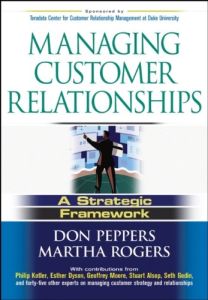Join getAbstract to access the summary!

Join getAbstract to access the summary!
Don Peppers and Martha Rogers
Managing Customer Relationships
A Strategic Framework
Wiley, 2004
What's inside?
Identify, differentiate among, interact with and customize for each customer - or, just the ones you want to keep.
Recommendation
This very extensive text on customer relationship management leaves nothing unsaid or unexplained. Authors and editors Don Peppers and Martha Rogers tackle the subject with admirable organization, clarity and depth. They define every important term and do not lose the reader in marketing jargon - a rare virtue in a book about marketing. The text, including contributions from other well-known experts in the field, propounds a well-developed theory of customer relationship management (CRM) and sets out numerous examples to illustrate, explain and clarify the theory. Useful as a handbook, textbook or reference manual, the book covers - among many other core subjects - customer identification and differentiation, customer feedback, an analysis of retailing and basic tools for CRM. getAbstract.com highly recommends this book to service-oriented managers and executives. To form profitable relationships with your customers, first get friendly with Peppers and Rogers.
Summary
About the Authors
Don Peppers and Martha Rogers are founding partners of the Peppers and Rogers Group, a Carlson Marketing Group Company based in Norwalk, Connecticut. They are the co-authors of five bestselling books about one-to-one customer relationships and were named by Business 2.0 magazine as two of the most important business gurus of all time.

















Comment on this summary